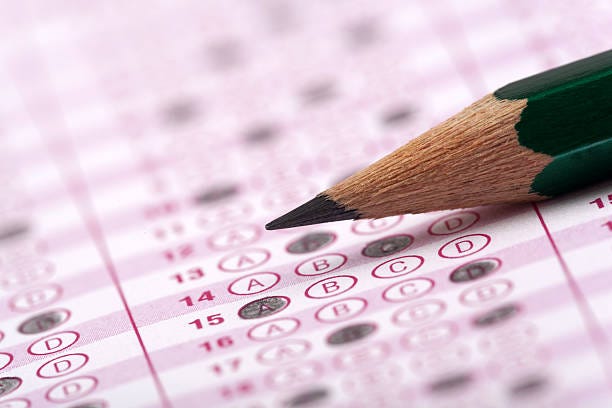The Pins Are Falling
Today, more than 80% of U.S. bachelor-degree colleges and universities have opted to make standardized test scores optional for applicants.
What this means for students is that it is entirely up to them on whether they want to submit test scores (SAT/ACT) or not when applying to these institutions. If omitting test scores, students are required to submit other areas of the application that give insight to the reviewer on who they are, both academically and personally.
For many, this is a breath of fresh air that no longer needs to rely on an inequitable test to determine the intelligence of a student. For others though, this shift is creating a new structure that will absolutely change the way their organization operates in the industry, whether they can see it coming or not.
The big catalyst of it all? Understanding how to properly access and assess student driven learning experiences, specifically related to Experiential Learning (EL).
The Big Four
We have known for decades that standardized tests do not measure academic merit, but rather highlight the inequalities and bias’ of our education system. In our present day and connected age, the typical African-American student scores below 75% of White students on almost every standardized test in the U.S. With an ecosystem mentality that values individuals as a wealth of talent and contributors to sustainable communities and thriving economies, we need to ensure that all students are presented with the best opportunities to succeed in the classroom. This starts with a shift in curriculum and assessment, putting The Big Four on notice.
The Big Four are Harcourt Educational Measurement, CTB McGraw-Hill, Riverside Publishing, and NCS Pearson. Together, they write 96% of the exams administered at the state level (including the SAT), valued at more than $700 million annually. The big surprise? They are all curriculum providers as well, grossing billions of dollars in state, national, and privately funded programs preparing students for their tests. Shocking, right?
So to recap, the testing companies are also writing the curriculum that K-12 institutions, and their students, have been dependent on for generations. With colleges and universities beginning to shift to an optional testing structure, this institutionalized testing practice is at risk…and we could not be happier about it.
A Learner-Led Ecosystem
So, what does this all mean for the actual learner and our educational institutions?
Content depth and knowledge through experiences, both in-and-out of the classroom will reign supreme. Without a standardized test and assessment model, colleges and universities will have to depend on evaluating a students experiences and expertise to showcase their academic focus and goals. This shift in assessment means we must create hands-on learning experiences for all students within our communities.
Colleges and universities will be left at a crossroad with assessment and standardized testing. One path leads to embracing the change and building systems that support personalized learning. The other path only increases the equity gap, requiring student applicants to take individual institution exams. We need creativity and outside the box thinkers to reinvent ways to measure the talent and ambitions of young people, with a heavy focus on positive change.
This shift will put a significant short-term strain on K-12 districts not prepared for the EL movement. The best thing K-12 schools can do over the next 2 years is utilize funding (especially ESSER funds) to develop partnerships and programs with community organizations that can support their student’s interests and learning experiences.
Education In Motion
How would this learner-led experience work with regard to EL and personalizing assessment?
Here’s the structure we use when first developing EL programs at K-12 schools.
EL Action: Provide a safe space for students to share their academic and personal interests.
Student Project: Survey shared with an entire classroom of students, posing questions relating to their interests, career pathways, academic subject areas, and the SDGs.
EL Action: Present curated information and resources to students based on their interests that focuses on self-guided learning, with a clear assessment indicator on what success looks like for students involved.
Student Project: Utilized classroom time to research and discover content related to their survey results, with built-in assignments that measured the comprehension of the subject areas.
EL Action: Seek mentors who can serve as content experts, deepening knowledge and exposure, while helping participants form meaningful relationships.
Student Project: By aligning the work with SDG targets and baseline data, we attracted project mentors to contribute their expertise while supporting the students subject area development.
EL Action: Project created by the student that connects to challenges within their community, built on the content knowledge acquired, empowering them to become the owner of the initiative.
Student Project: Students were asked the “Why” (why are you interested in this?) and the “How” (how will you accomplish your goals) behind their projects.
EL Action: Continued mentorship is a vital piece of the program. Students were assigned a project mentor to guide them throughout the learning experience.
Student Project: Each student met with a teacher or community member bi-weekly, discussing updates, project needs, and introducing them to more industry experts/organizations.
EL Action: Utilize a framework that is accessible across all channels and industries that showcases the project development and outcomes. An important thing to remember here is the process is just as important as the results.
Student Project: With the de-emphasis on testing, students created a digital presentation of their journey and outcomes (acting as an asset moving forward), along with meeting with their teacher to measure the success of their project. It turns out students are brutally honest about their work and the “grade” assigned when feeling like an equal and having a voice in their learning.
This project required no additional resources for the school or students, but rather an understanding that their state/nationally required subject areas and standards could easily fit into an EL framework. Student engagement was through the roof compared to traditional learning experiences (i.e. The Big Four), teacher self-appreciation and motivation ranked significantly higher than teaching to a test, and the community impact created by these projects will be felt for years to come.
The EL revolution is coming…will you be ready for it?
ActivatED is an educational initiative led by Evin Schwartz. Connect with Evin on Twitter to learn more about his work.





